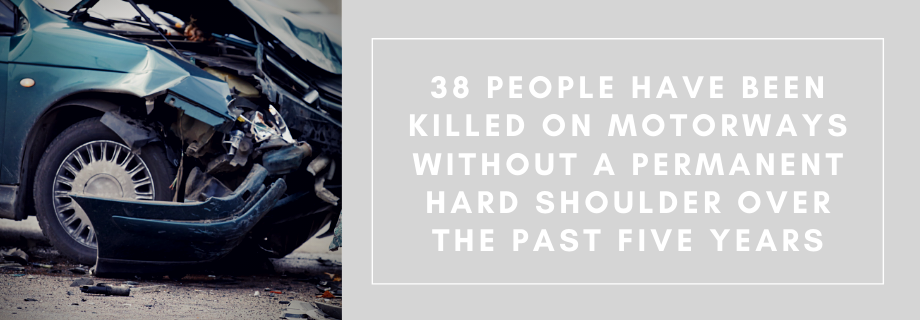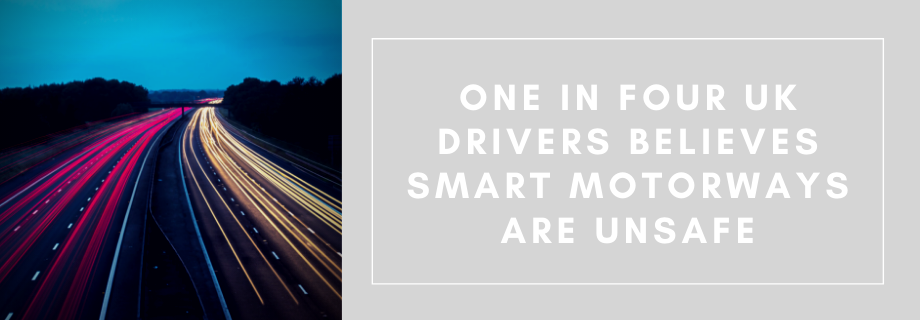Smart motorways – what’s going on?
Smart motorways started appearing in 2006, with the first trial on the M42.
Now, some MPs and road safety organisations are claiming that they’re dangerous and need an overhaul.
How smart motorways work
Some smart motorways do away with the traditional hard shoulder, using the hard shoulder as another lane to ease congestion if needed. Others have a permanent hard shoulder or none at all; with no hard shoulder, the left lane is simply closed in an emergency. All smart motorways use electronic signage to alert drivers to speed limit changes and lane closures.
As we’re all painfully aware, smart motorways are monitored by speed cameras – but also general monitoring cameras, which Highways England uses to track congestion, breakdowns and accidents.
New emergency refuge areas are marked with blue signs and an orange SOS telephone symbol.
Why smart motorways are controversial
1. Obstructions in open lanes are extremely dangerous
The hard shoulder has been removed on 13 stretches including parts of the M1, M3, M5, M6 and M25, while seven parts of the network have a ‘dynamic’ hard shoulder that opens and closes depending on traffic.

The Times reported that Highways England takes an average of 17 minutes to detect a car pulled over on a smart motorway. This means the lane they’re in remains open and motorists are in danger. Once Highways England does detect the vehicle, the lane then turns into a hard shoulder with a red X above it to warn off traffic.
But should a hard shoulder really appear only when someone’s already in it, in danger? 17 minutes is a long time for a large hazard to sit in motorway traffic, in an open lane. This delay also means the emergency services can’t safely get to the vehicle and have to circle via junctions until they can approach.
A BBC Panorama investigation found that 38 people had died on the M25 smart motorway. In the five years before the road was turned into a smart motorway there were 72 ‘near misses’ – an incident that could cause a fatality. In the five years after, there were 1,485.
2. Breakdowns are on the rise as the hard shoulder disappears
The number of breakdowns on our motorways has increased by nearly a fifth since 2014. 20% more people potentially stranded in an open lane on a motorway. 10 out of the 15 motorways with the highest numbers of breakdowns are smart motorways.
The summer months are always worst for breakdowns and with older cars common among young drivers, it’s a risk they’re disproportionately affected by. Car maintenance may not be top of the priority list when you drive a 2005 Toyota Yaris – but it’s even more important than for newer cars.
Currently, the distance between emergency refuge areas on a smart motorway can be as much as 1.5 miles. Anyone who’s had a tyre burst at speed knows you can’t always make it that far.
However – Highways England say at 60mph, you’ll reach a place to stop in an emergency every 75 seconds on average.
What MPs recommend for smart motorways
The group of MPs who oppose smart motorways wants the government to stop any expansion of smart motorways. They want new safety tech retrofitted to the existing smart motorway network before any more are planned.
The focus is on introducing radar systems to detect breakdowns or crashes faster, plus increasing the number of emergency refuge areas.
“I don’t like the term ‘smart motorways’ because it infers they’re a good idea. They’re anything but smart.”John Apter, Chairman of the Police Federation of England and Wales
What the public thinks of smart motorways
According to a poll by Kwik Fit, nearly a third of drivers often don’t know whether or not they should be on a hard shoulder because the signs aren’t clear enough.
20% don’t know when the hard shoulder is in use. That is extremely dangerous: one moment of indecision could turn into a life-threatening crash.

The RAC Foundation found that 23% of drivers had driven in a closed lane on a smart motorway – whether by accident or on purpose.
How to stay safe on smart motorways
1. Be aware of overhead signage
The signage lets you know which lanes are open (they’ll have the speed limit – which can change – above them). A closed lane, including a temporary hard shoulder, will have a red cross above it.
You must obey a lane closure. It means something has happened that could be dangerous to you.
2. Keep on top of your vehicle maintenance
With the hard shoulder disappearing from long stretches of motorway and SOS areas spaced 1.5 miles apart, you don’t want to break down.
You need to be doing oil and tyre pressure checks anyway, along with getting a regular service and not ignoring warning lights. If you’re setting off on a long motorway journey, particularly in the summer, you MUST do these checks. Don’t risk breaking down with nowhere to go.
3. If you break down:
- If you’re experiencing problems, try to get to an SOS area – look for the blue signs with an orange SOS phone symbol. You can call Highways England from there.
- If you can’t make it to an SOS area, pull over as far into the left lane as possible. Put your hazard lights, fog lights and side lights on and then get out of the passenger side of your vehicle IF you can do it safely. Stand behind the barrier if there is one and call your breakdown service.
- If you can’t get out of your car, stay inside with your seatbelt and all lights on, and call 999.
As soon as highway control are aware of your vehicle, they’ll close the lane you’re in with a red cross overhead. You can find more advice on what to do if you break down on a smart motorway at GOV.UK.
Smart motorways are still evolving
Smart motorways improve congestion and there’s evidence that they make motorways safer.
With the potential addition of better monitoring for emergencies, smart motorways will continue to improve safety. But at the very least, there’s a way to go with public opinion.
“Evidence indicates that smart motorways are helping to improve safety. The first nine of the latest generation of smart motorways have reduced casualty rates by more than 25 per cent.”Mike Wilson, Chief Highways Engineer at Highways England
Sources
Smart motorways labelled death traps by Police Federation chairman – driving.co.uk
Motorway breakdowns in Britain rise by a fifth in five years – driving.co.uk
One in four UK drivers believe smart motorways are unsafe – driving.co.uk
Smart motorways – Highways England
How to drive on a smart motorways in an emergency or breakdown – GOV.UK